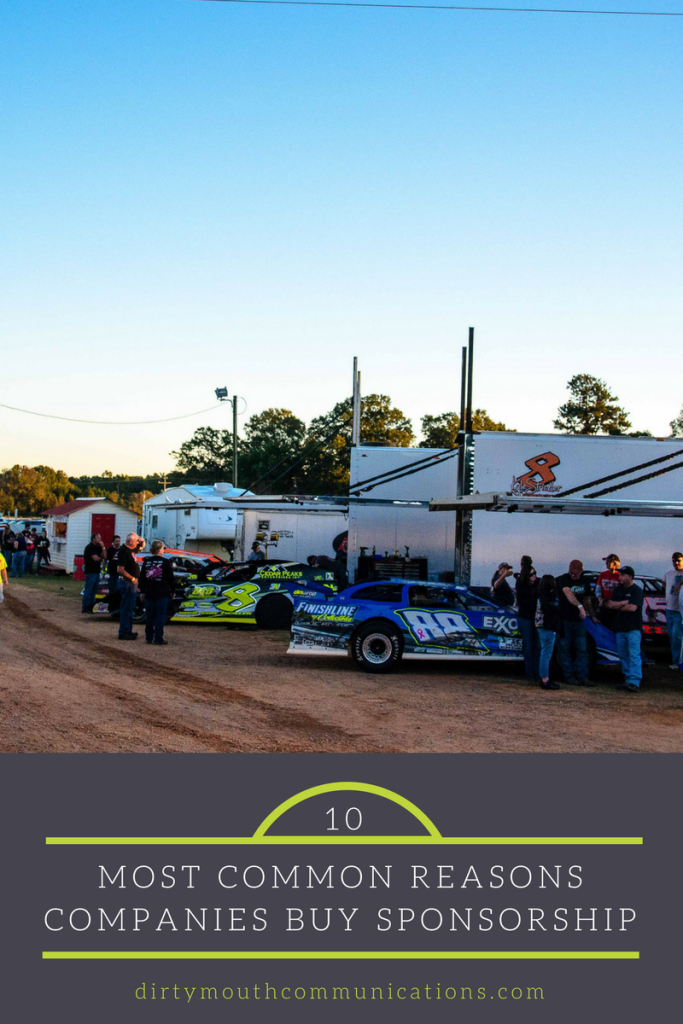It’s the first quarter of the year, and the last few weeks for me have had a lot of focus on working on sponsorship deals for various properties.
One common mistake that I see teams, tracks and event promoters make when pitching potential marketing partners is focusing on only one aspect of sponsorship: exposure to an audience. When I talk about slapping a logo on a car and turning circles (or nailing up a sign), this is what I’m talking about. 
Yes, ‘exposure’ is still an important part of sponsorship. But if it is the focus of your partnership, you’re only going to make it work with a few major tweaks. And I still believe, even with those tweaks, if it’s the only focus of your pitch you’re going to be in trouble.
As in zero dollars trouble.
Why?
Because exposure is generally free or cheap these days with social media, guerilla and word-of-mouth marketing and the ability for companies to build their own audiences on a variety of platforms.
In effect, purely reaching a certain number of people is going to be significantly cheaper by using other means than sponsoring your race car or track. And it’s going to be easier to explain and show ROI to a manager or company owner than trying to quantify the number of people who saw your race car or trailer.
If a company can, say, reach 2,500 people in a very specific audience through Facebook ads for $100 (which you can if you’re good at it), is it economical for them to spend the same or more for them to reach 2,500 people with just a logo in the grandstands at your weekly race? Where they will get no data about whether those people are in their very specific audience?
Probably not.
(By the way, what are those major tweaks? One is by offering exposure to a very specific set of people that the company might not otherwise be able to reach. As in, people who ride Harley Davidsons between the ages of 35 and 38 and only drink almond milk. Having a relationship with a very niche group of people can be valuable to the marketer who needs to reach them, and they will pay for access to them.)
So, if purely offering eyeballs on a logo isn’t the way to go anymore, what can you offer?
Here are the top-ten reasons that I see companies purchase sponsorship:
- Increase brand loyalty
- Show community responsibility
- Create awareness and visibility
- Change/reinforce image
- Drive retail traffic and/or sales
- Sample/display brand or product attributes
- Recruit/retain employees
- Entertain clients
- Incentivize retailers, dealers and distributors
- Differentiate product from competitors
This isn’t a hard-and-fast rule. There are plenty of other reasons that companies partner with race teams, tracks and events, but this is what I’ve seen in my personal experience and through the deals I’ve worked on.
(By the way, exposure falls under the ‘create awareness and visibility’ category.)
Now, thinking beyond offering exposure to a logo or a message, how can you create offers for companies that align with bigger (read: MORE VALUABLE) goals?
Push yourself to think outside of the logo box to what you can do for your partners to help improve their business in regards to one of their objectives.
Could you offer a VIP experience to their VIP clients, with pit passes, apparel, catering and a tour of your hauler? Could you do a taste test (in-person or on social media) of their product’s new flavor formulation to help them change the product’s image, or unbox the product from it’s new packaging? Could you offer samples of their product to their ideal customers at the race track or other events?
Yes. Yes, you can. I believe in you!! [Insert *crazy eyes* here.]
And, by the way, let’s not gloss over the part where I yelled ‘MORE VALUABLE’ a few paragraphs up.
Riddle me this: do you think it’s more valuable for company to reach a certain number of potential customers with their logo or retain just one employee, as an example?
The numbers are all over the map, but the cost of losing an employee is pretty significant for a company. A CAP study estimated that for low-wage jobs, turnover costs the company about 16% of the worker’s salary. But for mid-range positions, it jumps to 20%. Which means the cost of replacing a $40,000/year manager’s job is $8,000.
If that manager (or manager’s kid) loves racing, wouldn’t even a $5,000 partnership where the manager had season passes and a relationship with their favorite race team be worth it if that keeps the manager in their position? The partnership would pay for itself in that benefit alone.
Can you see how the more specific you get at understanding and fulfilling a company’s needs, the more valuable your partnership will be?
If you need it, here’s more information on how to increase the value of your sponsorship offerings.
xo.
Kristin
P.S. Here’s a link to the Center for American Progress study I referred to above. Yes, I am the kind of nerd that spends time researching things like this. Do you think it helps me put a more accurate value on offerings? YEP. It also helps companies to put a number on a challenge they know they have, but don’t necessarily know what it means to their bottom line. Boom.

